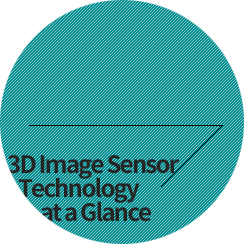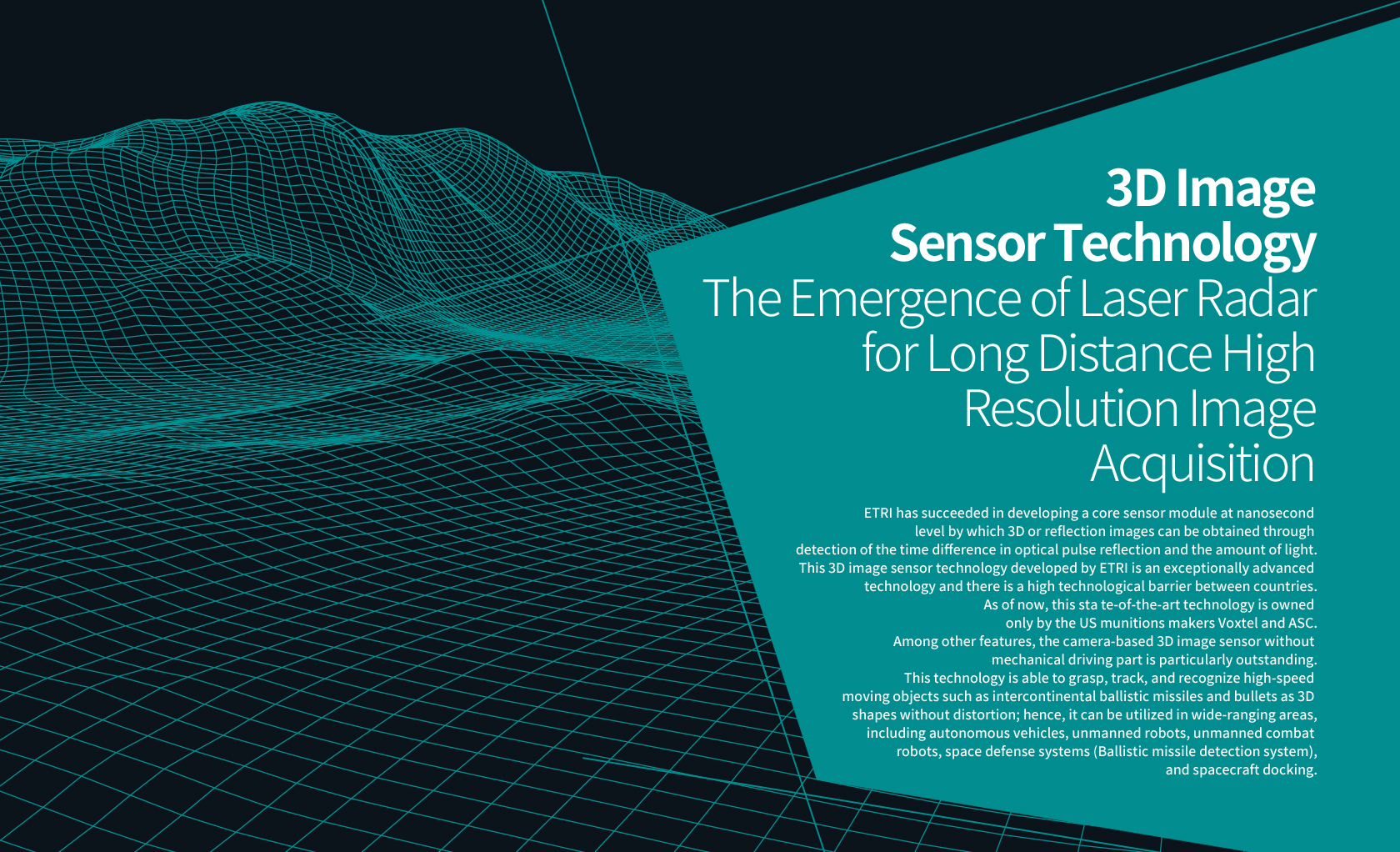
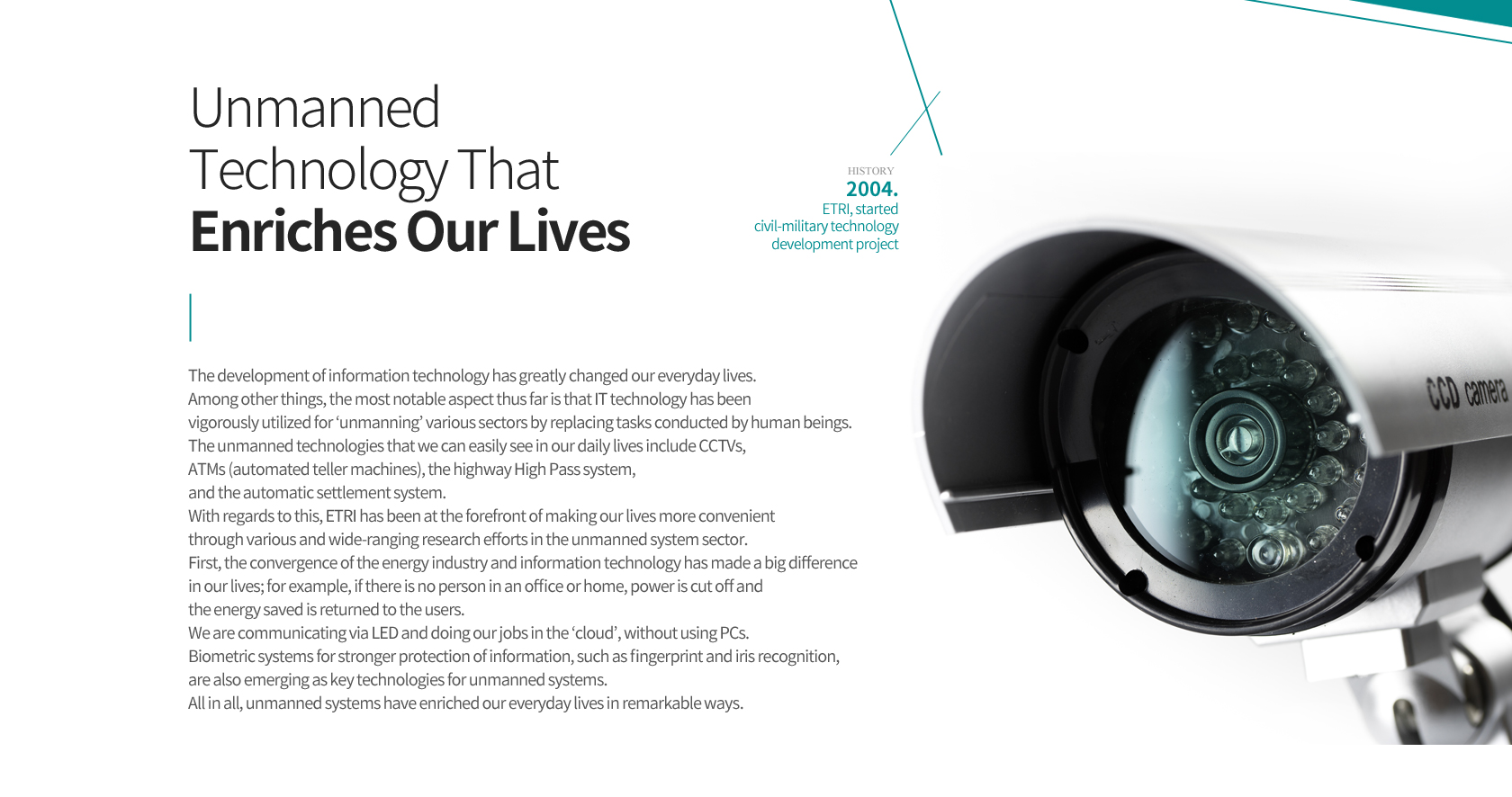
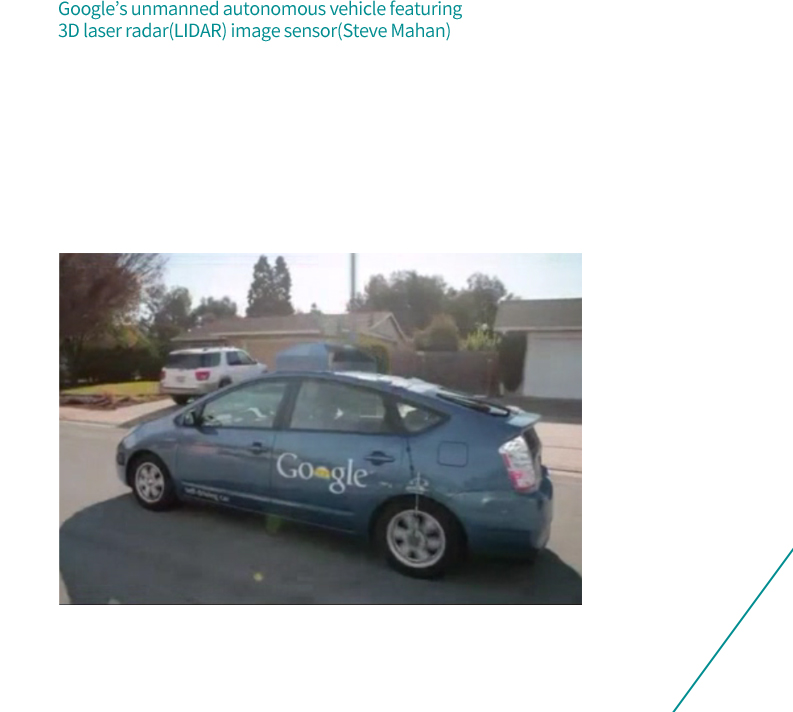
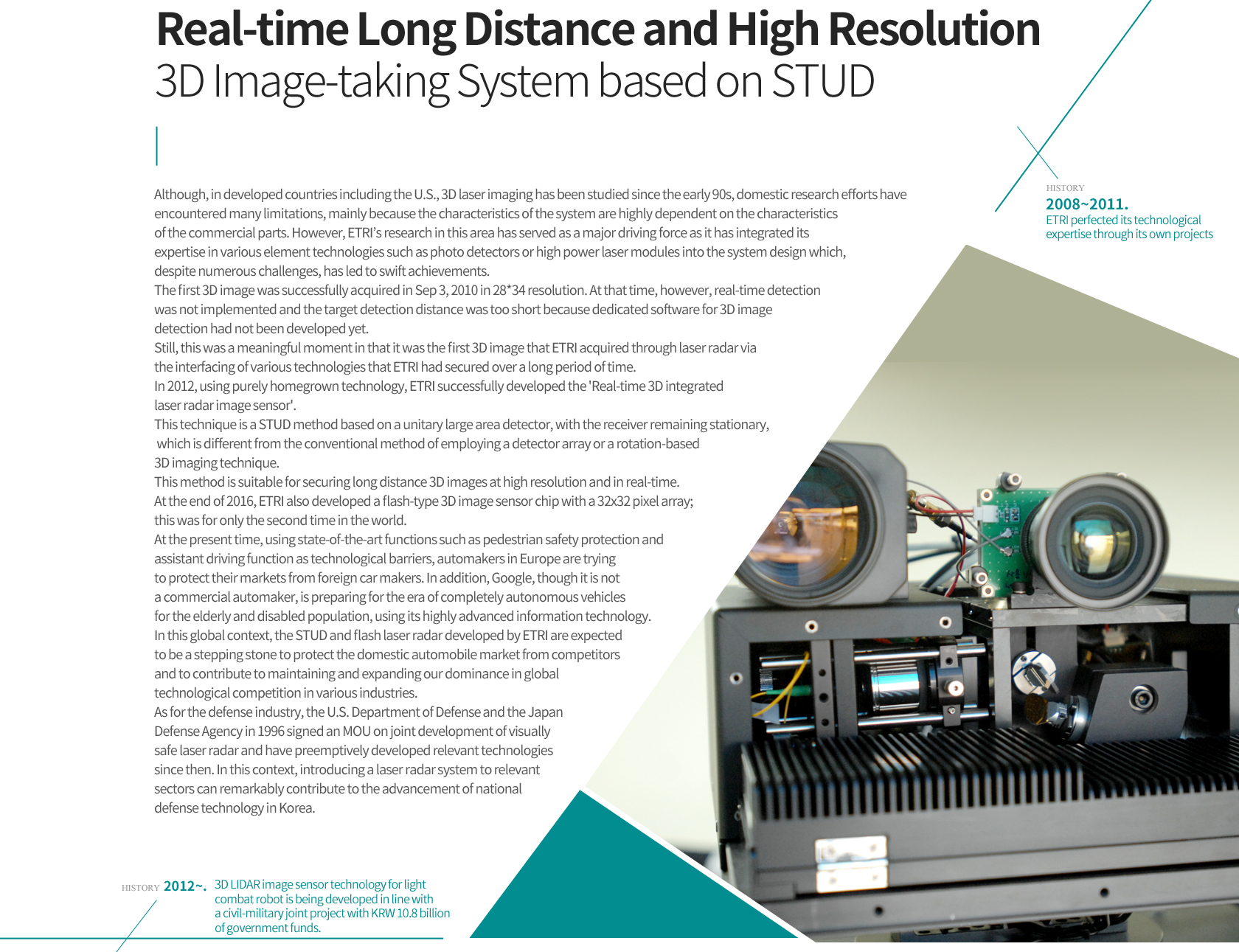
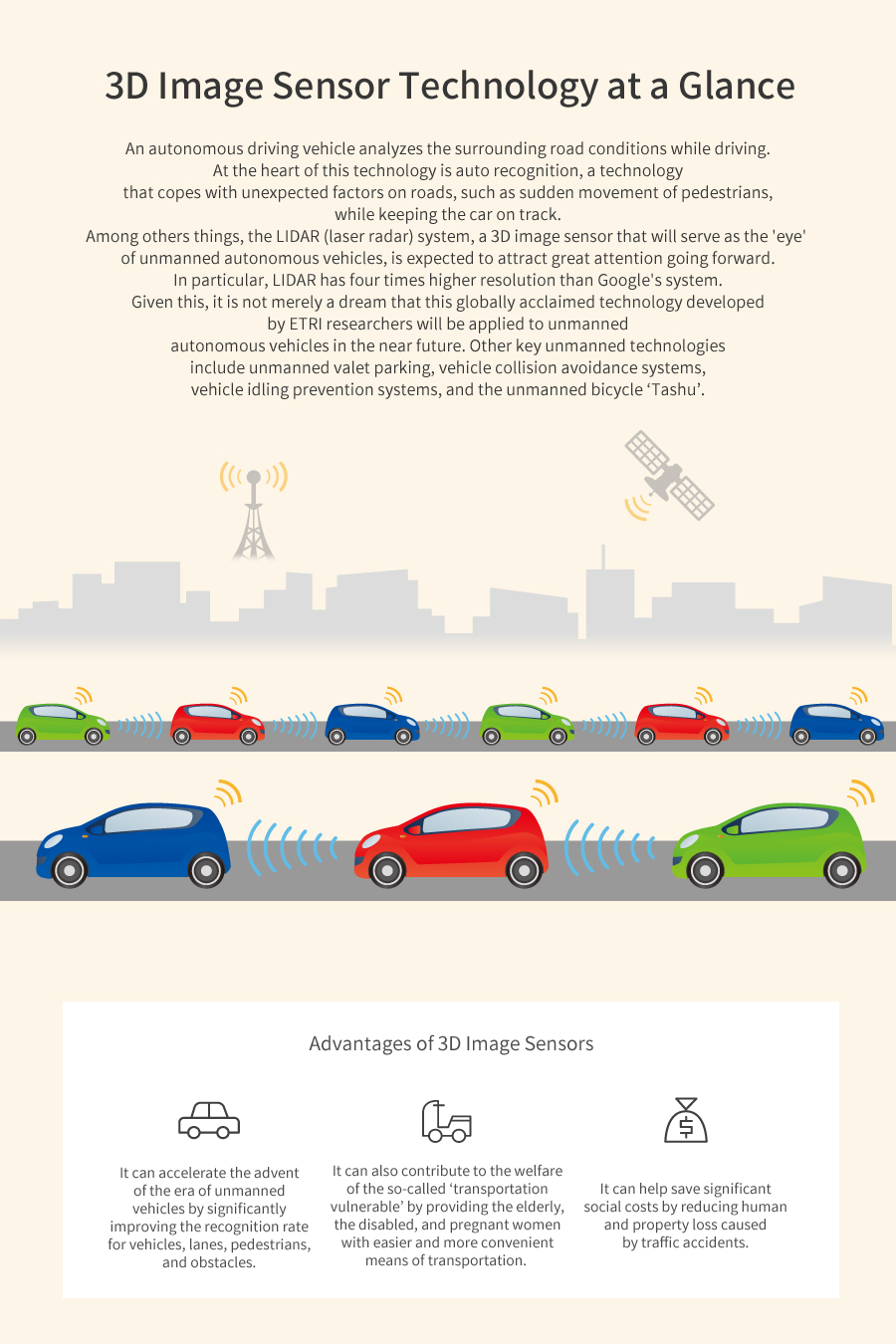
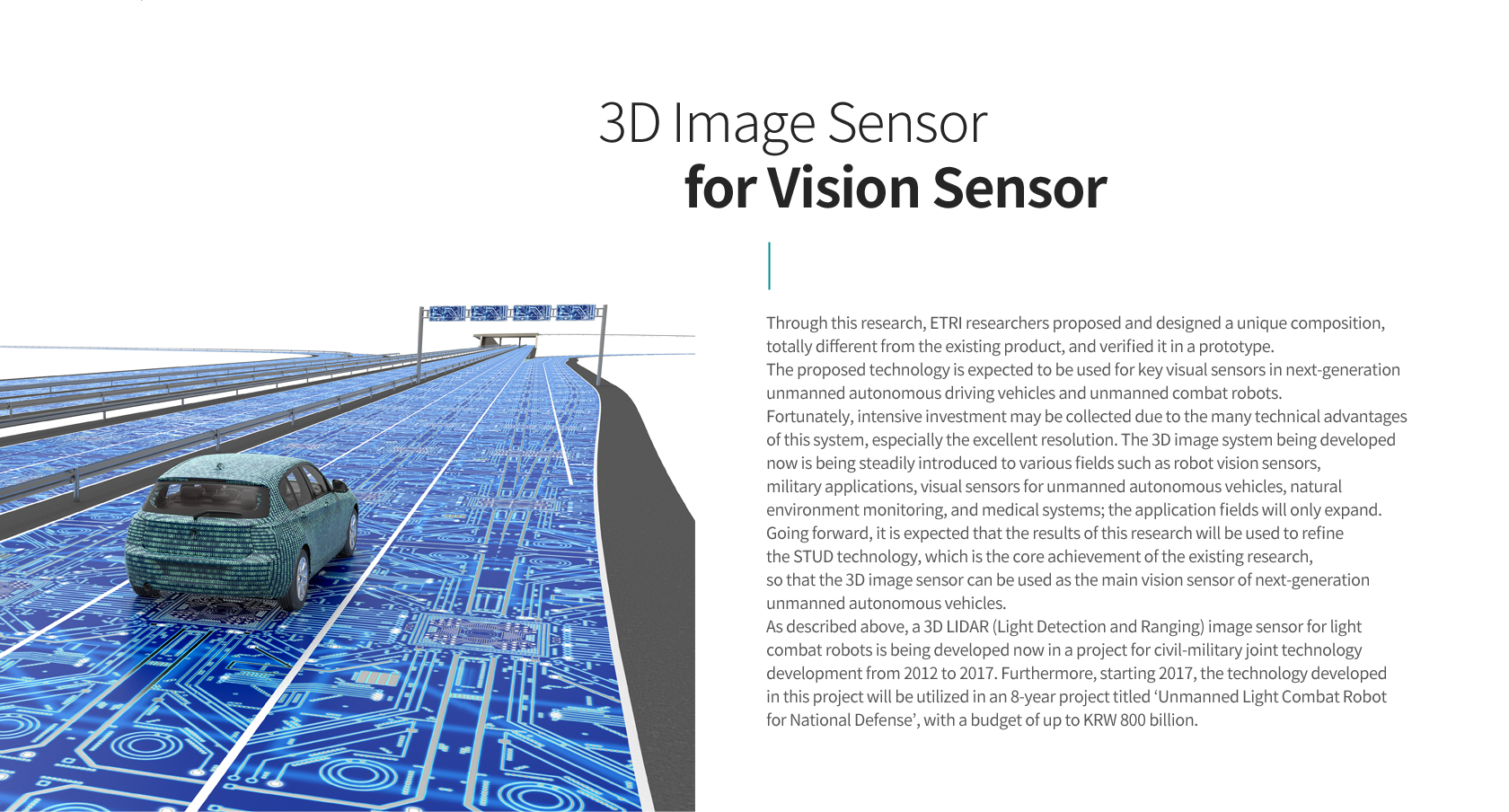
3D Image Sensor Technology:
The Emergence of LIDAR (Laser Radar) for Long Distance High Resolution Image Acquisition
ETRI has succeeded in developing a core sensor module at nanosecond level by which 3D or reflection images can be obtained through detection of the time difference in optical pulse reflection and the amount of light. This 3D image sensor technology developed by ETRI is an exceptionally advanced technology and there is a high technological barrier between countries. As of now, this state-of-the-art technology is owned only by the US munitions makers Voxtel and ASC. Among other features, the camera-based 3D image sensor without mechanical driving part is particularly outstanding. This technology is able to grasp, track, and recognize high-speed moving objects such as intercontinental ballistic missiles and bullets as 3D shapes without distortion; hence, it can be utilized in wide-ranging areas, including autonomous vehicles, unmanned robots, unmanned combat robots, space defense systems (Ballistic missile detection system), and spacecraft docking.

Unmanned
Technology That
Enriches Our Lives
The development of information technology has greatly changed our everyday lives. Among other things, the most notable aspect thus far is that IT technology has been vigorously utilized for ‘unmanning’ various sectors by replacing tasks conducted by human beings. The unmanned technologies that we can easily see in our daily lives include CCTVs, ATMs (automated teller machines), the highway High Pass system, and the automatic settlement system. With regards to this, ETRI has been at the forefront of making our lives more convenient through various and wide-ranging research efforts in the unmanned system sector. First, the convergence of the energy industry and information technology has made a big difference in our lives; for example, if there is no person in an office or home, power is cut off and the energy saved is returned to the users. We are communicating via LED and doing our jobs in the ‘cloud’, without using PCs. Biometric systems for stronger protection of information, such as fingerprint and iris recognition, are also emerging as key technologies for unmanned systems. All in all, unmanned systems have enriched our everyday lives in remarkable ways.
Google’s unmanned autonomous vehicle featuring 3D laser radar (LIDAR) image sensor (Steve Mahan)
Real-time Long Distance and High Resolution
3D Image-taking System based on STUD
Although, in developed countries including the U.S., 3D laser imaging has been studied since the early 90s, domestic research efforts have encountered many limitations, mainly because the characteristics of the system are highly dependent on the characteristics of the commercial parts. However, ETRI’s research in this area has served as a major driving force as it has integrated its expertise in various element technologies such as photo detectors or high power laser modules into the system design which, despite numerous challenges, has led to swift achievements.
The first 3D image was successfully acquired in Sep 3, 2010 in 28*34 resolution. At that time, however, real-time detection was not implemented and the target detection distance was too short because dedicated software for 3D image detection had not been developed yet. Still, this was a meaningful moment in that it was the first 3D image that ETRI acquired through laser radar via the interfacing of various technologies that ETRI had secured over a long period of time.
In 2012, using purely homegrown technology, ETRI successfully developed the 'Real-time 3D integrated laser radar image sensor'. This technique is a STUD method based on a unitary large area detector, with the receiver remaining stationary, which is different from the conventional method of employing a detector array or a rotation-based 3D imaging technique. This method is suitable for securing long distance 3D images at high resolution and in real-time. At the end of 2016, ETRI also developed a flash-type 3D image sensor chip with a 32x32 pixel array; this was for only the second time in the world. At the present time, using state-of-the-art functions such as pedestrian safety protection and assistant driving function as technological barriers, automakers in Europe are trying to protect their markets from foreign car makers. In addition, Google, though it is not a commercial automaker, is preparing for the era of completely autonomous vehicles for the elderly and disabled population, using its highly advanced information technology. In this global context, the STUD and flash laser radar developed by ETRI are expected to be a stepping stone to protect the domestic automobile market from competitors and to contribute to maintaining and expanding our dominance in global technological competition in various industries.
As for the defense industry, the U.S. Department of Defense and the Japan Defense Agency in 1996 signed an MOU on joint development of visually safe laser radar and have preemptively developed relevant technologies since then. In this context, introducing a laser radar system to relevant sectors can remarkably contribute to the advancement of national defense technology in Korea.

3D Image Sensor
for Vision Sensor
Through this research, ETRI researchers proposed and designed a unique composition, totally different from the existing product, and verified it in a prototype. The proposed technology is expected to be used for key visual sensors in next-generation unmanned autonomous driving vehicles and unmanned combat robots. Fortunately, intensive investment may be collected due to the many technical advantages of this system, especially the excellent resolution. The 3D image system being developed now is being steadily introduced to various fields such as robot vision sensors, military applications, visual sensors for unmanned autonomous vehicles, natural environment monitoring, and medical systems; the application fields will only expand. Going forward, it is expected that the results of this research will be used to refine the STUD technology, which is the core achievement of the existing research, so that the 3D image sensor can be used as the main vision sensor of next-generation unmanned autonomous vehicles.
As described above, a 3D LIDAR (Light Detection and Ranging) image sensor for light combat robots is being developed now in a project for civil-military joint technology development from 2012 to 2017. Furthermore, starting 2017, the technology developed in this project will be utilized in an 8-year project titled ‘Unmanned Light Combat Robot for National Defense’, with a budget of up to KRW 800 billion.

- 2004.
- ETRI started civil-military technology development project
- 2008. ~ 2011.
- ETRI perfected its technological expertise through its own projects
- 2012. ~
- 3D LIDAR image sensor technology for light combat robot is being developed in line with a civil-military joint project with KRW 10.8 billion of government funds.







